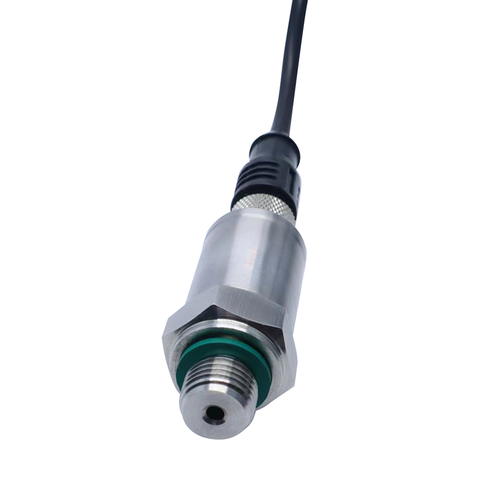Sensitivity is the most important parameter of the strain type pressure sensor. Sensitivity is the output signal coefficient of the pressure sensor, in mV/V, common ones are 1mV/V, 2mV/V, the full range output of the pressure sensor=working voltage * sensitivity, for example, the working voltage is 5VDC, the sensitivity is 2mV/V, the full range output is 5V * 2mV/V=10mV, if the full range of the pressure sensor is 100KG, the pressure is 100KG, the output is 10mV, and the pressure is 50KG, the output is 5mV.

The sensitivity unit of resistance strain type pressure sensor is mV/V (millivolt/volt). This unit is not easy to understand for people who first contact this product. In fact, this is a kind of passive sensor, and the signal output must be under the excitation of external power supply. So this sensor is at least four-wire system -- two power supplies and two signals.Generally, the sensitivity of pressure sensor is 1~2 mV/V, there are also 3 mV/V, and there are less than 1 mV/V. Generally speaking, the greater the sensitivity of pressure sensor is, the better, but this depends on the impact of elastomer design, strain gauge, comprehensive error of pressure sensor, and limit load. Generally, within the linear range of the pressure sensor, the higher the sensitivity of the pressure sensor, the better. Because only when the sensitivity is high, the value of the output signal corresponding to the measured change is relatively large, which is conducive to signal processing. However, it should be noted that the sensitivity of the pressure sensor is high, and the external noise irrelevant to the measurement is also easy to be mixed in, and will also be amplified by the amplification system, affecting the measurement accuracy. Therefore, it is required that the pressure sensor itself should have a high signal-to-noise ratio to minimize the interference signal introduced from the outside. The sensitivity unit of resistance strain type pressure sensor is mV/V (millivolt/volt). This unit is not easy to understand for people who first contact this product. In fact, this is a kind of passive sensor, and the signal output must be under the excitation of external power supply. So this sensor is at least four-wire system -- two power supplies and two signals.Generally, the sensitivity of pressure sensor is 1~2 mV/V, there are also 3 mV/V, and there are less than 1 mV/V. Generally speaking, the greater the sensitivity of pressure sensor is, the better, but this depends on the impact of elastomer design, strain gauge, comprehensive error of pressure sensor, and limit load. Generally, within the linear range of the pressure sensor, the higher the sensitivity of the pressure sensor, the better. Because only when the sensitivity is high, the value of the output signal corresponding to the measured change is relatively large, which is conducive to signal processing. However, it should be noted that the sensitivity of the pressure sensor is high, and the external noise irrelevant to the measurement is also easy to be mixed in, and will also be amplified by the amplification system, affecting the measurement accuracy. Therefore, it is required that the pressure sensor itself should have a high signal-to-noise ratio to minimize the interference signal introduced from the outside.
The sensitivity of the sensor is directional. When the measured quantity is unidirectional and its directionality is high, the sensor with low sensitivity in other directions should be selected; If the measured vector is multidimensional, the smaller the cross sensitivity of the sensor is, the better.2mV/V refers to that when the rated load is applied to the sensor, the output signal and input signal are 2mV/V, that is, when the excitation voltage of the sensor is 1V, the output signal of the sensor changes to 2mV after the rated load is applied to the sensor.The maximum excitation voltage of the pressure sensor is mainly determined by the strain gauge, generally 15V, and the recommended voltage is 10VDC.



Leave a comment